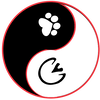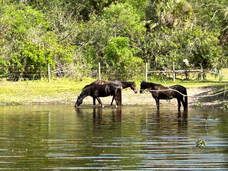 Abstract : Equine protozoal myeloencephalitis (EPM) is an important neurologic disease of horses most commonly caused by infection of the central nervous system by the protozoa, Sarcocystis neurona. Clinical signs can be focal or multifocal and are attributed to damage to neural tissues by invasion of the protozoa and concurrent inflammation. Many horses will test seropositive, however, only a small percentage will exhibit clinical signs which implies horses with a compromised immune system are susceptible to infection while horses with a healthy immune system are able to clear the parasitic infection without treatment. Traditional Chinese Veterinary Medicine theory views this disease pattern as a Zheng Qi Deficiency with Qi and Blood Stagnation. Premortem diagnosis in both Eastern and Western Veterinary Medicine involves a thorough neurologic exam and response to treatment. Treatment with acupuncture and herbal therapy alone or in conjunction with pharmaceuticals has a favorable prognosis. Food therapy and rehabilitation can assist the horse to return to full function. Recrudescence and reinfection when the immune system is challenged is a common sequela, therefore, long term care of EPM horses should include TCVM treatment during times when the Zheng Qi may be challenged. Read full paper here 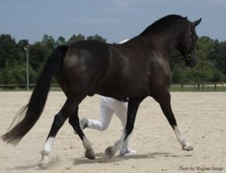 The Art and Science of Traditional Chinese Veterinary Medicine is based on the principles of the yin and yang, the balance and harmony of the universe and the 5 element theory to recognize the patterns of disease. Chiropractic focuses on the relationship between the structure and the function of the body and how that relationship affects the preservation and restoration of health. Chinese medicine & Chiropractic attempt to find the root of the problem and treat the root to bring the animal back to harmony and good health. Sport horses live a stressful life of travel, exposure to disease, physical and mental exertion. A wellness program is essential to keep your equine athlete happy, healthy and competing at the highest level. Dogs, Cats and other pets experience stress to their immune system and qi from the environment, lifestyle and changes in the household. Wildlife and exotics can experience stress from simply surviving in a captive environment. 5 Element theory can also help you understand the personality of your animals so you can have a more rewarding relationship. This is the first step in a harmonious household and successful training program. Basic behavior consults are part of every exam. Is your cat urinating outside the litter box ? Is your dressage horse unhappy ? Is your sweet old dog getting aggressive ? Maybe a more in depth behavior exam with all animals in the household or in a performance setting could help. A combination of Acupuncture, Chiropractic care, Tui Na, Food and Herbal therapy can be very effective for disease treatment and prevention. Chinese medicine can work with western medicine to enhance the healing process and lessen the side effects of drugs. Photo by Megan Benge Photography
When people think about Traditional Chinese medicine & veterinary medicine, the 1st thing that comes to mind is Acupuncture however the practice of TCM/TCVM has 5 different modalities that work holistically together & is frequently combined with conventional medicine to achieve the best outcome for the patient. TCVM includes 1. Acupuncture 2. Herbal Therapy 3. Tui-na Therapy 4. Food Therapy 5. Qi Gong AcupunctureArcheologists determined that Neolithic man, 8000 years ago used a primitive type of acupuncture tool called the bian-shi. It is a pyramidal shaped stone used to lance boils and stimulate certain points on the body to relieve pain. Later a sharp piece of bone was used for the same purpose and during the Shang Dynasty (1600 BC to 1100 BC), the metal acupuncture needle was invented. As they tracked their clinical results, they discovered acupoints with similar functions formed a line on the body and the sensation of the de - Qi would follow a certain pathway...a meridian or Jing-Luo. There are 12 paired regular channels that relate to the organs and 8 extraordinary channels, 2 of which follow the midline. The Governing vessel on the dorsal midline and Conception vessel on the ventral midline. There are also collateral and divergent channels that are smaller branches of the major meridians that link the organs and meridians to one and other to form an intricately connected pathway throughout the body. I use 3 kinds of acupuncture in my practice : dry needle, electro and aqua acupuncture. Dry needle is simple insertion of small acupuncture needles. During electro acupuncture, the needles are connected to a battery powered stimulator to deliver a painless low voltage current to the meridian. For Aqua acupuncture, I inject a small volume of vit b 12 or glucosamine into the point. This causes a small blister and gives continual stimulation over a few days. Herbal Therapy 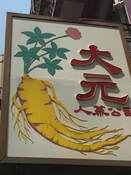 Herbal Medicine is an essential part of Traditional Chinese Veterinary Medicine. In China, TCVM treatment consists of 30% acupuncture and 70% Chinese herbal medicine. Chinese herbal medicine has a rich history extending over several thousands of years and has proven to be an effective treatment modality. Many formulas we use in practice today were developed many thousands of years ago. Some were developed for both animals and people, while others were developed specifically for animals. Formulas are used more commonly than individual herb so the actions of the herbs are balanced and the actions of one herb, say a warming herb, are not as damaging to the body because it is counter acted by a cooling herb. This balance can also be accomplished with diet ( see the Nutritional consult page) All our herbal formulas come from Jing Tang and we can guarantee their quality. There are no illegal or environmentally controversial substances in our herbal products ie (no ephedra or rhino horn). Tui-na - Massage, Stretching, ChiropracticFood Therapy Qi Gong - Gentle Exercise with Meditation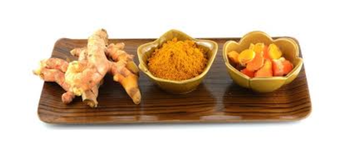 Turmeric root, Jiang Huang or Yellow Ginger is a commonly used ingredient in Asian, Middle Eastern and Indian cooking. If you have ever eaten Tandoori, Curry, Satay or Singapore noodles, you have eaten turmeric. Turmeric alone is not spicy but it is usually mixed with spicy herbs and chili powder to give the dish a spicy kick. Food therapy principles for “Clearing Heat” are to use foods with Cold properties and then to Open the Exterior to allow the heat to escape. Curry paste, a blend of turmeric with cooling properties plus chili powder which causes you to sweat (open the pores) would be following these TCM principles. Many of our herbal formulas contain turmeric as a main ingredient. These issues all have a degree of Heat (inflammation and/or infection) :
Incorporating Turmeric Root powder into your pet’s diet is a very good way to help control some of their most common ailments, like arthritis pain, itchy skin, diarrhea and anxiety. So how do you get started ? Read on for Dr. Doug's recommendations about preparing golden paste and dosages for pets and horses. For more info about Turmeric and to read Dr. Doug’s latest research, subscribe to Turmeric Life. Here is some great advice from Dr. Doug about using Turmeric as Food therapy for your animals. GOLDEN PASTE for - Humans - Dogs - Cats - Birds – Reptiles – Fish We are all animals and turmeric benefits all ! Start humans and dogs at ¼ teaspoon 2 to 3 times a day, with food. Small dogs and cats 1/8 tsp. If your gut biota does not tolerate it, you will get some diarrhea. If ok, double dose every 3 or 4 days until you are at 1 teaspoon doses with food and 3 to 4 times a day. To make Golden Paste (GP): Ingredients:
Can add the oil now or later when consuming. Place turmeric and water in pan, bring it to the boil then reduce to a simmer. Stir over gentle heat until you have a thick paste. This should take about 7-10 minutes. Or if you are adding turmeric powder to a stew, it is exactly the same as making golden paste and it will be assimilated into the food. Move from stove, let it cool down, add the pepper and oil at the end of cooking. Preferred oils are coconut, olive. You do not have to add oil now because it can be added later when consumed. Some like to put it all together at preparation though. Stir well (a whisk is ideal) and allow to cool. Ideally store in sterilized glass jar, or purpose designed plastic and refrigerate. Will keep for 2 weeks, refrigerated. You can freeze portions if you think you have too much and it will keep for a year, at less than 0 degrees C. Horses Start slowly with 1 tsp of Golden Paste or dry powder. Standard dose is 2 tsp of Turmeric Powder, 2 tsp Oil, 16 grinds freshly ground Black Peppercorns 2 times a day. Horses may or may not do better on GP and there is a lot of evidence that they assimilate dry powder very effectively. Being a herbivore it is a given that they digest plant matter much better than humans or dogs. Maximum will be a half cup of GP or powder at any one time but good results are seen with a lot less and normally 2 teaspoons of GP or even 2 teaspoons of powder are sufficient. For sarcoids at least a tablespoon of powder is needed once or twice daily. Ruminants small and large ( goats, sheep, llama and cows) These do just as well on neat turmeric powder because of their very efficient ruminal digestion. 1 teaspoon. Chickens They do very well on it: mix a ¼ tsp (or more if preferred) per bird into a small amount of grain. Pour boiling water to wet well, mix and sit for an hour. Feed out. 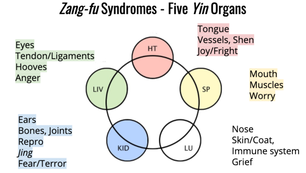 Did you listen into the show this morning about Sports Injuries ? Here is a quick review of what Glenn & I talked about on the TCVM segment on Horses in the Morning. Spring is here ! so even though we may not be out showing due to the lock down, we are still training out horses. Horses that have been cooped up in barns and indoor arenas are heading out on training/trail rides and are experiencing varying terrain like mud, partially frozen ground and pavement. During this transition from winter rest to spring training horses can suffer varying degrees of sports injuries...muscle pain, tendon strain, GI ulcers and chronic arthritis can flare. In Chinese medicine we use the 5 Element theory to help us group symptoms, exam findings and previous history into patterns to help us come up with a treatment and prevention strategy. Knowing your horse’s constitution can give you a clue as to what injuries they are prone to and help you take actions to prevent them. We have talked about the personalities as they relate to the 5 Elements for behavior. Now we will look at the organs and tissues associated with each. So once we know our horses constitution we can see what their weakness is and try to develop training techniques & routines to help them be their best and hopefully avoid training stress and injury.
Wood and Fire are Yang elements - Extroverts. They are high energy athletes. I always think high level eventers must all be wood….what other personality could jump that log over the ditch at Rolex ! They are going to go no matter what. Their muscle might be sore & they may be tired but they are going. Muscle fatigue causes extra stress on the tendons, along with a higher level of athletic achievement, we may see more tendon injuries in Wood horses. Fire horses make great race horses but are prone to bleeding because they have huge hearts both physically & mentally. Earth is a transitional element with Yin & Yang qualities, while Metal and Water are Yin...so introverts. They may need extra care to reach their athletic potential. They are not the type to push through the pain & when they are fatigued, they will stop or avoid work. Qi Performance herbal formula can help Yin type horses because it tonifies Qi and Blood so speeds up metabolism and oxygenates the tissues. It also has herbs that move Qi & Blood to reduce Stagnation ie (Pain) and nourish tissues to speed healing/turnover.
It is not a good choice for Yang horses - Fire/Wood because it will increase blood pressure and may make them too bold. Trivia - Hawthorn berry is the main ingredient in sweet & sour sauce ! Want more info about the 5 Elements and Sports Med ? Sign up as an HRN auditor or a HVHC premium member ! Qi Performance Herbal formula: Available in
Dosage Horses - 3 g twice a day (2 large scoops) Dog - 0.5 g per 20-40 lbs of body weight twice per day Ingredients : Bai Shao Yao (Paeonia), Dang Gui (Angelica), Huang Qi (Astragalus), Dang Shen (Condonopsis), Feng Hua Fen (Bee Pollen), Mu Dan Pi (Moutan), Shan Zha (Crataegus), He Shou Wu (Polygonum), Licorice (Gan Cao) 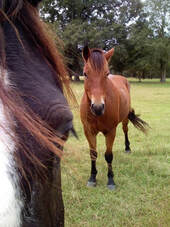 Well it finally happened....my first peer reviewed publication ! Many thanks to Abhishek Bhattacharjee, PhD and Samuel Wu, PhD for collaborating with me on our study of laser acupuncture. Our paper will be published in the April 2019 issue of the American Journal of Traditional Chinese Veterinary Medicine ! Thank you to my wonderful clients who participated in the study, Karen Abbattista, Kate McCaffery, Bill and LIz Still and Amy Chenard, to my always supportive spouse, Kyle Swanson and my mentors Dr. Deng-Shan Shiau, Dr. Huisheng Xie and Dr. Aituan Ma. If you are a member of the WATCVM, you can read the journal on line here https://watcvm.org 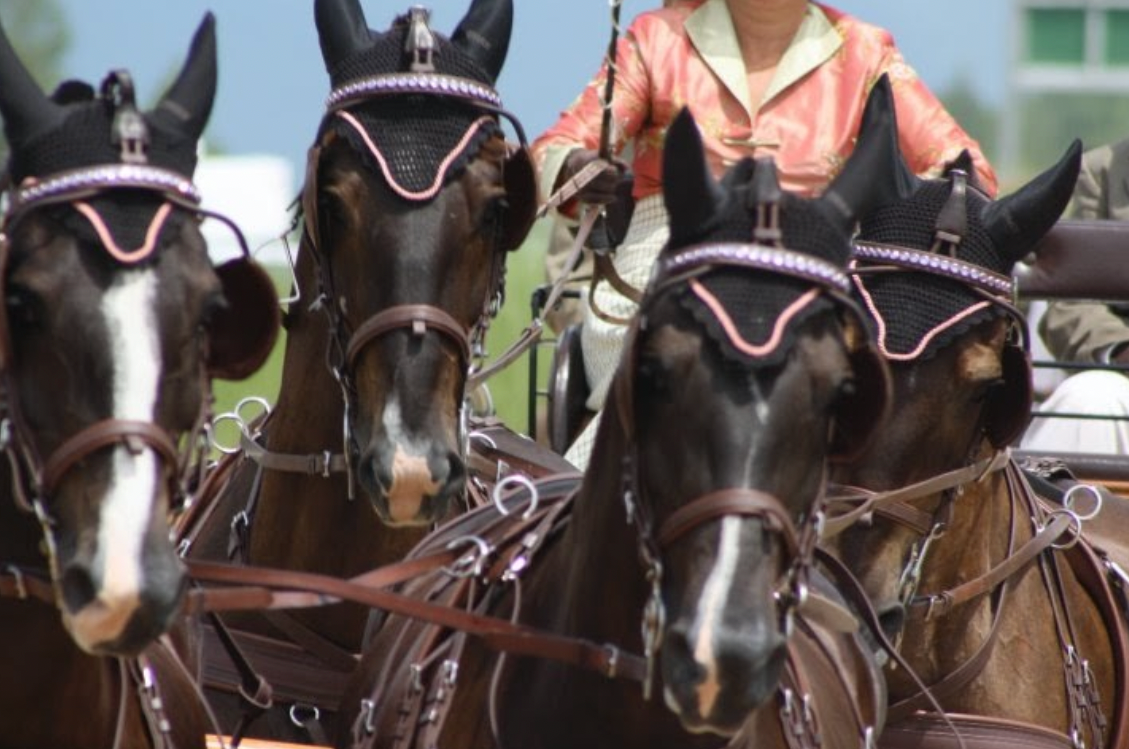
Dr. Wendy's Talk At the Carriage Association of America's Winter meeting in Sarasota Jan 2019.
After a brief overview of Traditional Chinese Veterinary Medicine, we explore the 5 Element Theory and learn how to determine the Constitutions and use that knowledge to develop more effective, harmonious training strategies for our horses. 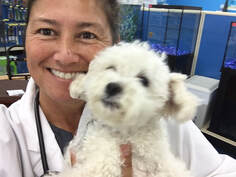 Dr. Wendy presented 2 papers at the 20th Annual International Conference on TCVM in November 2018 in Ocala. See Abstracts below. Full papers are published in Pain, Lameness, Neurological and Endocrine Disorders - TCVM Update through the Chi Institute bookstore TCVM for the Treatment of EPMAbstract Equine protozoal myeloencephalitis (EPM) is an important neurologic disease of horses most commonly caused by infection of the central nervous system by the protozoa, Sarcocystis neurona. Clinical signs can be focal or multifocal and are attributed to damage to neural tissues by invasion of the protozoa and concurrent inflammation. Many horses will test seropositive, however, only a small percentage will exhibit clinical signs which implies horses with a compromised immune system are susceptible to infection while horses with a healthy immune system are able to clear the parasitic infection without treatment. Traditional Chinese Veterinary Medicine theory views this disease pattern as a Zheng Qi Deficiency with Qi and Blood Stagnation. Premortem diagnosis in both Eastern and Western Veterinary Medicine involves a thorough neurologic exam and response to treatment. Treatment with acupuncture and herbal therapy alone or in conjunction with pharmaceuticals has a favorable prognosis. Food therapy and rehabilitation can assist the horse to return to full function. Recrudescence and reinfection when the immune system is challenged is a common sequela, therefore, long term care of EPM horses should include TCVM treatment during times when the Zheng Qi may be challenged. Using the Horse's Constitution to Treat "ADR"Abstract
Preventative veterinary medicine is an age old concept that is the basis of animal husbandry. As veterinary medicine continues to become more specialized, veterinarians delegate many of the preventative procedures; feeding, housing recommendations, parasite control, farriery, dental care, breeding and conditioning to paraprofessionals and caretakers. The majority of horse owners no longer come from agrarian backgrounds where husbandry practices for the local climate and forage was passed on from generation to generation. Media, funded by corporations that sell vaccines, pharmaceuticals, supplements and processed feeds, have become the largest source of educational material for our clients concerning the wellness of their horses. Many modern horses live in urbanized settings, have little turnout and are fed large amounts of concentrated feeds. Competition can be demanding due to travel, athletic expectations, emotional stress and artificial day lengths. Some horses are more sensitive to stress, temperature, training methods and foods. If we can recognize our patient’s weaknesses, we can be better equipped to help them. The 5 Element theory classifies a basic constitution of a horse and helps us recognize how a horse with a certain constitution reacts with his environment, lifestyle and rider. We can use the constitution to prepare a Traditional Chinese Veterinary Medicine treatment plan to support constitutional vulnerabilities to reduce the incidence of disease, lessen the risk of sports injury and keep the horse happy in its work. Educating our clients on basic care and wellness and considering constitution, diet, environment and seasonal factors will help our sporthorses stay strong in mind, body and spirit throughout their career. 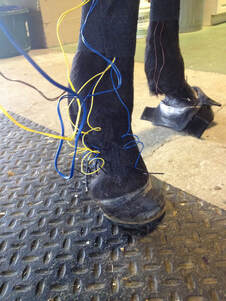 Jin - connective tissue tendon, ligaments, myofascia Jin is controlled by the Liver so tendon and ligament injury and disease are related to Liver disharmony. The Liver Blood and the Liver Yin keep the tendons and ligaments strong and flexible. Deficiency of Liver Blood and/or Liver Yin leads to weak tendons and ligaments that are prone to injury. Over work, stress, unbalanced shoeing can cause mechanical damage to the tendons resulting in pain aka Qi Stagnation. The Liver is the organ of the Wood Element. We have discussed Wood horses in previous blog posts. The Wood horse is athletic and strong. They want to win and because of that attitude, we sometime push Wood horses beyond their physical capabilities leading to tendon damage. Spring is the season associated with the Wood. Spring is the time we start training after a winter of rest and is the season of muddy deep footing. An unfit horse plus deep, slippery footing are factors that can lead to tendon injury. Diagnosis of tendon damage in Eastern and Western medicine is the same. There will be lameness, swelling, heat and tenderness in the area of tendon injury which is Qi and Blood Stagnation. Underlying conditions are Liver Yin and/or Liver Blood Deficiency as discussed above. Minor tendon injuries can sometimes be spotted on the DAPPE (Diagnostic Acupuncture Point Palpation Examination). We will see sensitive points at the shoulder and upper neck between C2 and C3. If these points are sensitive, along with sensitivity of the tendon locally to palpation, an ultrasound should be done to detect minor tendon damage. If present, treatment, rest and physical therapy should be started immediately. TCVM treatment principles include relieving the Qi and Blood Stagnation and then tonifying the Liver Blood and Yin. Our acupuncture treatment would be focused on local points near the injury along with points to support the Liver Blood and Yin. You may be wondering why your veterinarian is putting in so many needles in your horse’s hind leg when he has a front tendon injury. Many of our points for tendons are on the Gallbladder (Wood element) and Liver meridians which begin in the hind leg. Our main points for tonifying Blood and Yin are also close to the hock and stifle. Herbal therapy includes a topical formula, Relief Salve to increase blood flow to the area to reduce pain and edema along with an oral herbal formula, Tendon and Ligament formula, that treats pain and supports the Yin and Blood. The two main herbs in Relief Salve are Ru Xiang and Mo Yao aka Frankincense and Myrrh. These two tree resins have been used for centuries both topically to reduce pain, swelling and increase circulation to reduce bruising ie “move Blood”. They can also be used orally for diseases of stagnation like arthritis and cycling issues in mares. Ru Xiang Frankincense is aka as Boswellia and is many modern arthritis formulations to reduce pain. Relief salve also contains Zang Nao aka Camphor and Chuan Jiao aka Sichuan pepper. These are both aromatic and contain alkaloids that are quickly absorbed into the skin and cause numbness. Although Sichuan pepper is in the citrus family and is not actually a pepper, it’s alkaloid, hydroxy alpha sanshool, is very similar in structure to capsaicin found in chili peppers so should not be used for horses competing under FEI/USEF drug rules. That being said, if you are treating a tendon injury, your horse should not be competing, they should be resting and given time to heal. Bu Gan Qiang Jin San ( Tonify Liver Strengthen Tendons Powder aka Tendon and Ligament formula) is an oral herbal treatment that relieves pain and supports the Liver Yin and Liver Blood. Its main herb is Gou Qi Zi aka Goji berries which tonifies the Liver Yin and the Jing. Wu Jia Pi aka Siberian Ginseng or Eleutherococcus strengthens tendons and ligaments. It is considered an “adaptogen” which is a buzzword in natural health today meaning it helps the body resist stress. Current research indicates Wu Jia Pi may act on the hypothalamic-pituitary-adrenal axis to moderate the fight or flight instinct which can be very helpful to a Wood horse on stall rest and exercise restriction. Sang Zhi aka Mulberry twig is used as a transporter for the herbal formula to the limbs. Current research indicates compounds in Sang Zhi have Cox-2 inhibition activities similar to NSAIDs like previcox/equiox. Jing is the Qi you are born with. We only have a certain amount so it must be conserved. Horses that have developmental issues or are sick as young horses have a Jing deficiency. Degenerative Suspensory Ligament Desmitis (DSLD) is a Jing deficiency disease. These horses have a genetic defect in the cells that produce collagen to repair tendon damage. Overtime, the tendons and ligaments lose their elasticity leading to pain and slowly increasing pastern angle. We would treat these cases like a tendon injury to relieve the Stagnation and tonify the Liver Yin and Blood deficiency and then we would treat Jing deficiency along with therapeutic trimming & shoeing. The Jing can be supported with Food Therapy. Foods that tonify the Jing are goji berries 25 g (¼ cup) per day and Spirulina 20 g (2 TBs) per day . The Liver Yin and Blood can be supported with some of our horse’s favorite foods, apples and carrots. So it’s not all bad news when your horse has a tendon injury. He will get some time off, you can work on your clicker training and recovery involves lots of apples and carrots. Want to hear more about Tendon injury ? Listen in to our latest episode of Horses in the Morning : Driving. The TCVM segment starts at 29:20. Anhidrosis is a common problem in sport horses training and competing in hot humid conditions. Horses reduce their body temperature during exercise mostly by sweating. As sweat evaporates from the body surface, the body heat is reduced. They can also dissipate heat by respiration. Cool air enters the lungs and cools the blood flowing to the muscles and hot air is exhaled. During hot and humid conditions, the rate of evaporation of sweat is reduced and breathing in hot, humid air does little to cool the blood. The horse's coat is also a great insulator and can act like a wet suit keeping a layer of heat next to the skin if the sweat is slow to evaporate or is not scraped off. Sometimes it is difficult to know if your horse is sweating enough. Some early signs may be reluctance to work, panting, sweating only under tack or a sticky dry coat. Some horses sweat more than normal in the months before they stop sweating. Horses with concurrent lung disease like heaves are at a greater risk of heat stroke because they have limited ability to cool themselves by respiration. The sweat glands are highly innervated and are stimulated by the sympathetic nervous system (fight or flight response). The mechanism of anhidrosis in horses has not been determined but In chronic cases, the sweat glands are atrophied, suggesting multiple bouts of heat stroke may lead to more severe symptoms over time. In people, some causes have included congenital, metabolic and autoimmune diseases, skin damage and drug induced causes. In TCVM, the Heart controls the sweat glands and the Lung controls the exterior of the body and the Wei Qi (immune system). The balance between Yin and Yang control the body temperature. The Yin is like the air conditioner while the Yang is like the furnace. Summer Heat is one of the 6 pathogens in TCVM and can damage the Heart and Lung Yin so we view anhidrosis as a Heart and Lung Yin deficiency. Treatment principles in TCVM include acupuncture, herbal and food therapy in addition to environmental modification like monitoring body temperature during exercise, working in cooler weather, taking frequent breaks in the shade, and cooling with water and scraping to help speed evaporation. During pasture and stall time, horses should always have access to shade, fans, salt, electrolytes and cool fresh water. The NOAA heat index chart can help you determine when it is unsafe to work your horse if he is prone to anhidrosis. In south Florida, we are in the extreme caution zone for most of the summer. Due to our high humidity, even in the early morning or late evening. You may have to be vigilant about cooling before, during and after your horse's work out or you may choose to give them some time off during the summer. Herbal therapy in combination with acupuncture has shown great promise in helping non-sweaters. Our recommendation is to start treatment in the late spring and continue through the summer until the heat index consistently falls below 90. This could include acupuncture once per month plus herbal and food therapy daily. New Xiang Ru San is Dr. Xie's Herbal Formula made specifically for horses with anhidrosis. It contains a blend of Bian Dou (hyacinth bean), Xiang Ru (mosla), Hou Po (magnolia bark), Lian Qiao (forsythia) and Jin Yin Hua (honeysuckle flower). Food therapy includes cooling foods to tonify the Heart Yin and pungent foods that tonify the Lung and increase sweating. A variety of foods from this list can be added to the horse's diet as treats or mixed into the feed. You can also check out our recipe for "green tea" ice pops on the feeding seasonally blog post. Alfalfa Dark Malt based beer (Guiness) Cucumber Celery Chia Seeds Kombu (Kelp) Spirulina Lemon Watercress Yam Lettuce Peppermint Radish Aloe Listen in to the new Driving Radio Show on Horses in the Morning for more TCVM info ! This month our Tremont training tip from Keady Cadwell is how to teach your horse to drive safely in a group, Katie Whaley recaps the Lexington Carriage Classic at the Kentucky Horse Park and Abbie Trexler has some great news about the new ADS vest rule. Plus in the TCVM update, Dr. Wendy talks about non-sweating and managing your horse through the summer heat.
|
�
Dr. WendyPractices Traditional Chinese Veterinary Medicine in Sarasota, Florida Categories
All
Archives
December 2023
|
|


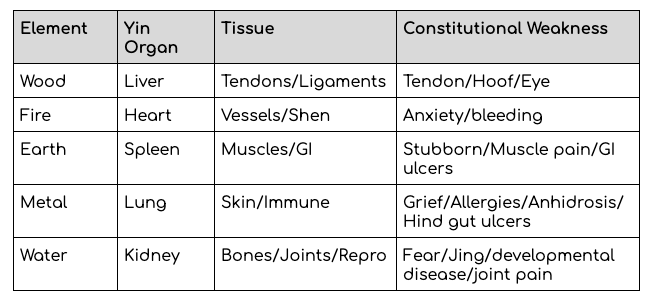

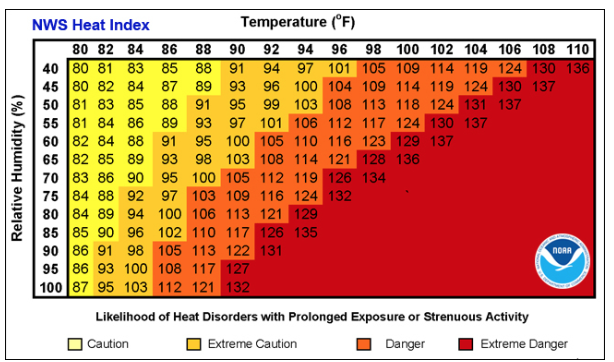




 RSS Feed
RSS Feed

